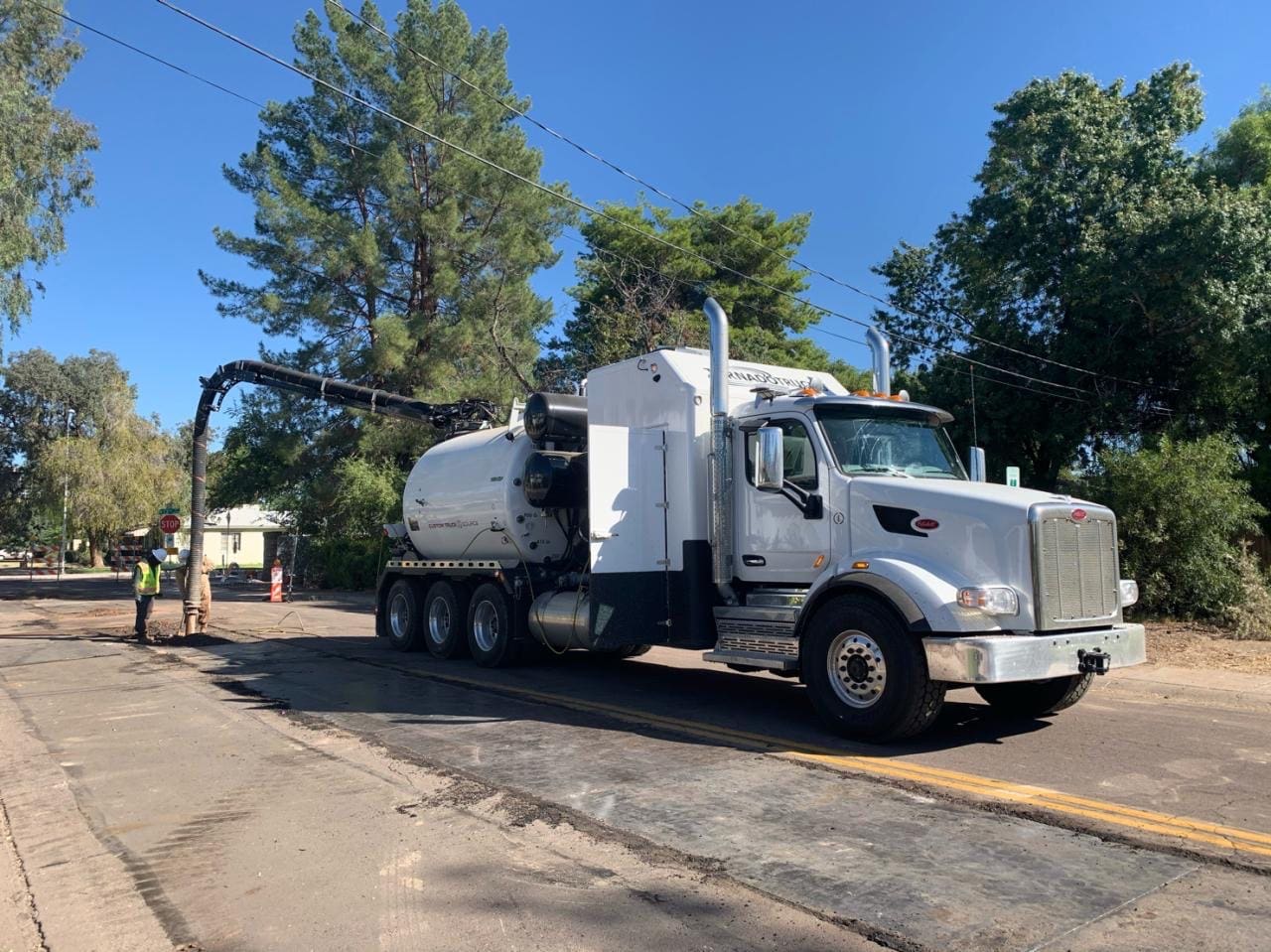
After travelling at length around North America and inspecting equipment in the Hydrovac industry, I have found too many water pumps that are performing under par and increasing downtime for lack of knowledge about proper maintenance. Water pumps that don’t function optimally, have a direct impact on your productivity, and in this blog, I shall share some useful pointers about the two most commonly-used pumps – Cat pumps and Prattazzoli pumps – so you have a handy checklist to refer to about proper water pump maintenance from here on.
Preventive Maintenance
For pump reliability and efficiency, comply with maintenance intervals to the manufacture’s specs.
Maintenance Every 24 Hours
- Check oil level
- Clean inline water supply filters
Maintenance After Every 500 hours
- Check oil level
- Check Valves, valve seats, springs, Valve guides, H.P. seals and L.P. seals
Maintenance After Every 1000 hours
- Change oil
- Check or Replace Valves, Valve seats, Valve springs, Valve guides, H.P. seals and L.P. seals.
A Troubleshooting Checklist
# 1: Pump Pulsating Irregularly
- The passage of liquid is being choked by bends, elbows, fittings on the suction line are choking
- Air suction
- Insufficient supply
- Suction filter is dirty or too small
- The booster pump, if installed, is supplying insufficient pressure or flow rate
- The pump is not primed due to insufficient head or the outlet is closed during priming
- The pump is not primed due to valve jamming
- Worn valves
- Worn pressure seals
- Faulty pressure control valve
- Problems with the transmission
# 2: Pump Is Not Making Any Noise Upon Start-Up
- The pump is not primed and is running dry
- No suction water
- Valves are jammed
- The outlet line is closed and does not allow the release of air present in the pump manifold
# 3: Reduced Flow Or Excessive Noise
- Insufficient supply (see various causes as above)
- Pump speed is below the rated speed
- Excessive internal leakage of pressure control valve
- Worn valves
- Excessive leakage from the pressure seals
# 4: Cavitation Causes
- Improper sizing of suction ducts/undersized diameters
- Insufficient flow rate
- High water temperature
# 5: Insufficient Pressure
- The user flow (nozzle) is or has become greater than the pump capacity
- Abnormal revolutions per minute. – Excessive leakage from the pressure seals
- Imperfect functioning of the pressure control valve
- Worn valves
# 6: Pump overheats
- The pump is working in over pressure conditions or pump rpm is higher than the nominal value
- Oil in the pump casing is not at level or not the recommended type
- Excess belt tension or joint or pulley alignment is incorrect
- Excessive pump tilt during operation
# 7: Vibrations or hammering on pipes
- Air suction
- Faulty operation of pressure control valve
- Valves malfunction
- Non-uniformity of transmission motion
ABOUT PRATISSOLI PUMPS
Oil gets degraded by oxidation, and must be changed at least once a year.
For a room temperature other than between 0 °C – 30 °C, follow the instructions, considering that oil must have a minimum viscosity of 180 cSt.
The pump is supplied with oil suitable for room temperatures from 0 °C to 30 °C. Recommended types of oil are indicated in the list below. These oils have additives to increase corrosion resistance and fatigue resistance. Alternatively, you can also use Automotive Gear SAE 85W-90 oil for gearing lubrication.
Preventive Maintenance
Every 500 hours
- Check oil level
- Every 1000 hours
- Change oil
Check/replace Valves, Valve seats, Valve springs, Valve guides and P. seals
Brands And Types Of Oils Recommended
- AGIP ACER220
- Aral Degol BG 220
- BP Energol HLP 220
- CASTROL HYSPIN VG 220 CASTROL MAGNA 220
- Falcon CL220
- ELF POLYTELIS 220, REDUCTELF SP 220
- NUTO 220 TERESSO 220
- FINA CIRKAN 220
- RENOLIN 212, RENOLIN DTA 220
- Mobil DTE Oil BB
- Shell Tellus Öl C 220
- Wintershall Ersolon 220
- Wintershall Wiolan CN 220
- RANDO HD 220
- TOTAL Cortis 220
Check the oil level and top off if necessary, using the oil dipstick. The correct checking of the oil level is made with the pump not running, at room temperature. The oil change must be made with the pump at working temperature. The quantity required is ~ 3.8 liters.
ABOUT CAT PUMPS
Pump and System Preventive Maintenance Guidelines
Many application factors determine proper pump maintenance intervals. Variation in duty cycle, operating performance, fluid temperature, fluid type, inlet conditions and application environment can affect maintenance schedules. Every application should be evaluated and serviced based on its own requirements.
Water leaks or loss of system performance can be an indicator of seal wear. Seal wear has many causes, including contaminated liquid or high temperature/run dry operation. If the low-pressure seals show wear, the high-pressure seals most likely are in a similar condition.
It is a good practice to replace both low and high-pressure seals and inspect plungers when leaks are present.
Cat Pumps recommends using our custom-blend premium grade hydraulic oil formulated to meet Cat Pumps specifications. For best results, perform an initial oil change after the first 50 hours of operation and every 500 hours thereafter. If other oil is used, oil change should be performed every 300 hours of operation.
If system performance degrades or changes, check seals and valves immediately. Service as required to restore system performance. Depending upon operating conditions, maintenance intervals for seals kits range between 1,500 and 8,000 hours.
Pump valves typically require changing every other seal change. Depending upon operating conditions, maintenance intervals for valve kits range between 3,000 and 16,000 hours.
Doing simple routine maintenance and paying attention to your equipment is always affordable. Not doing so is costly.
Find more information and tips at hydrovacnation.ca.



